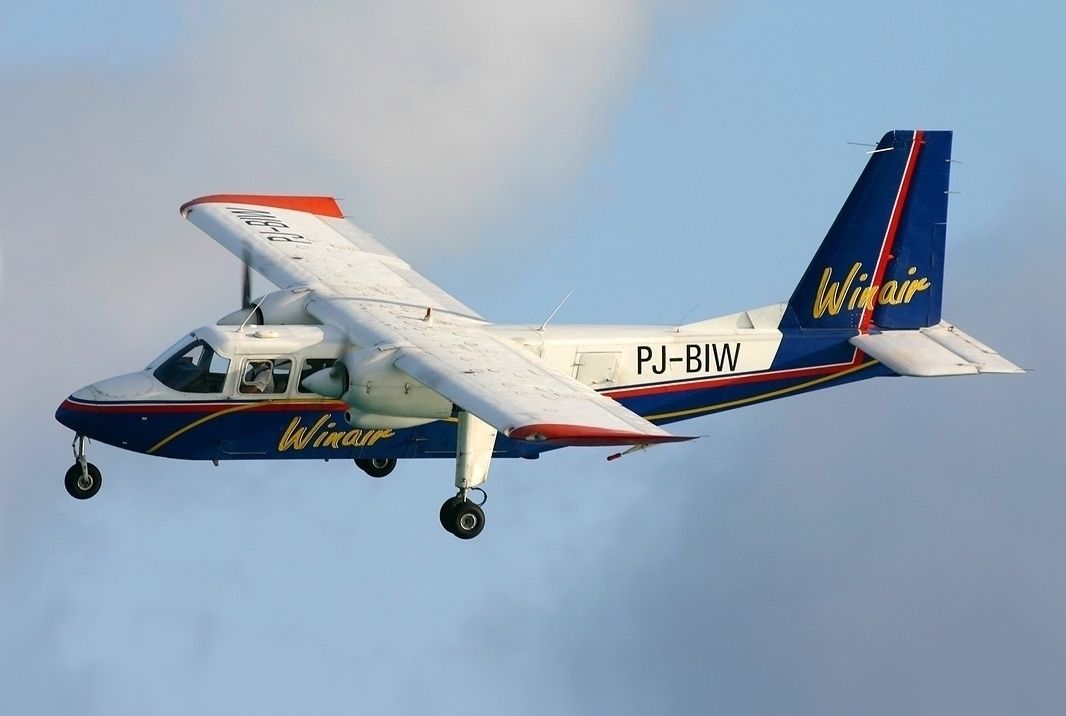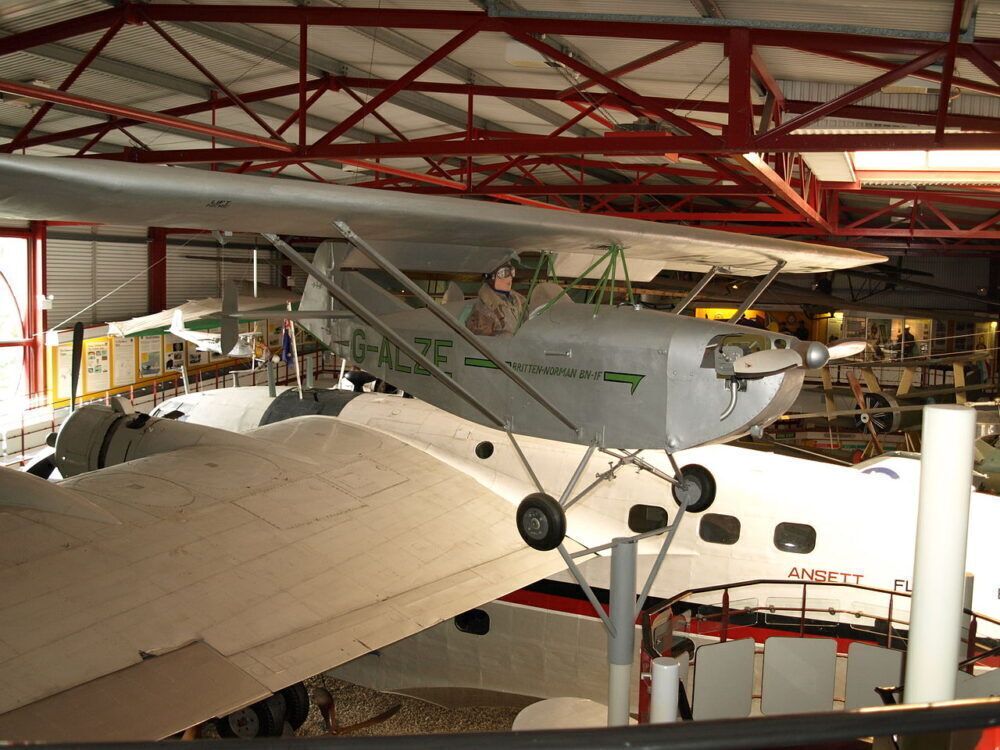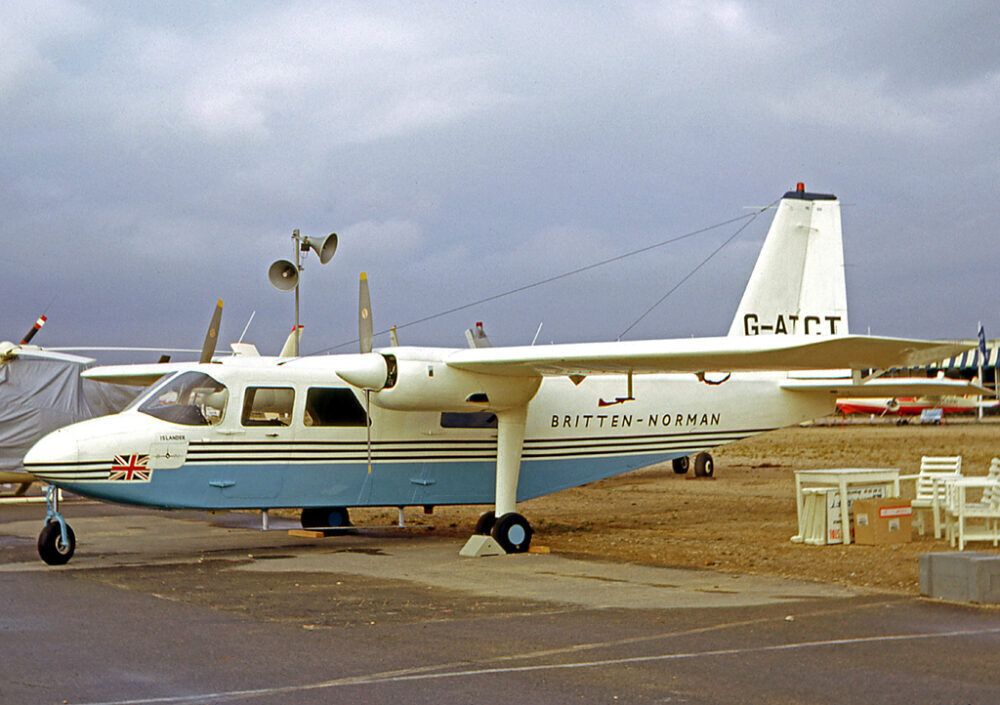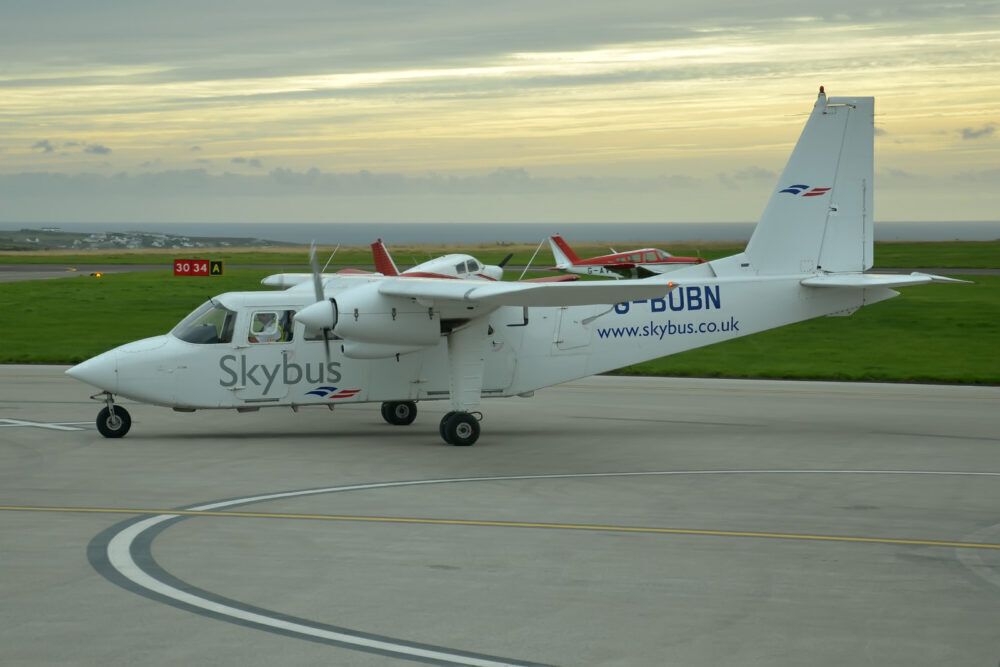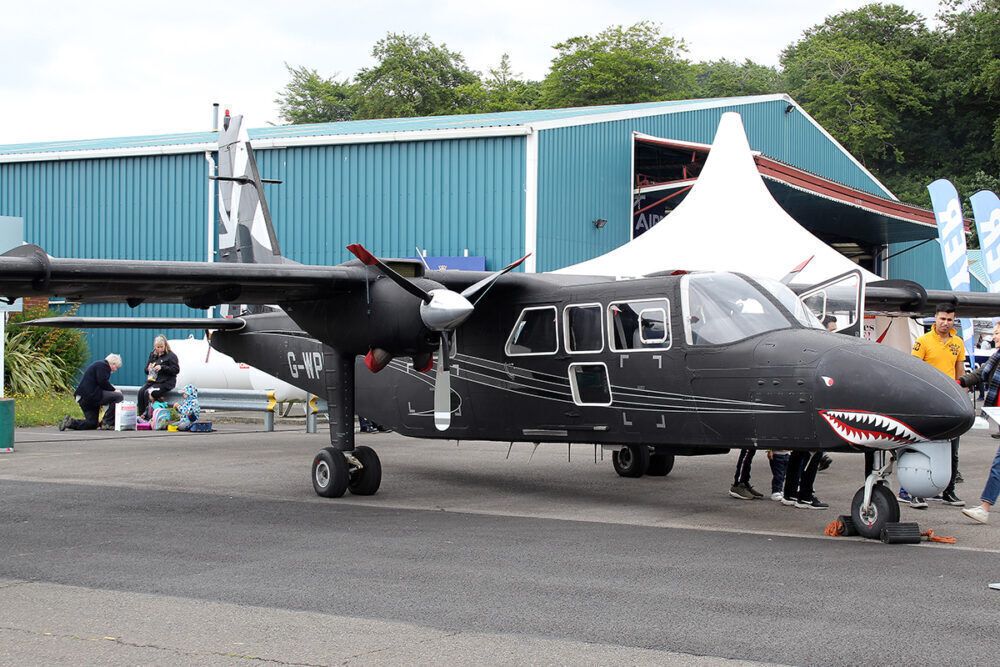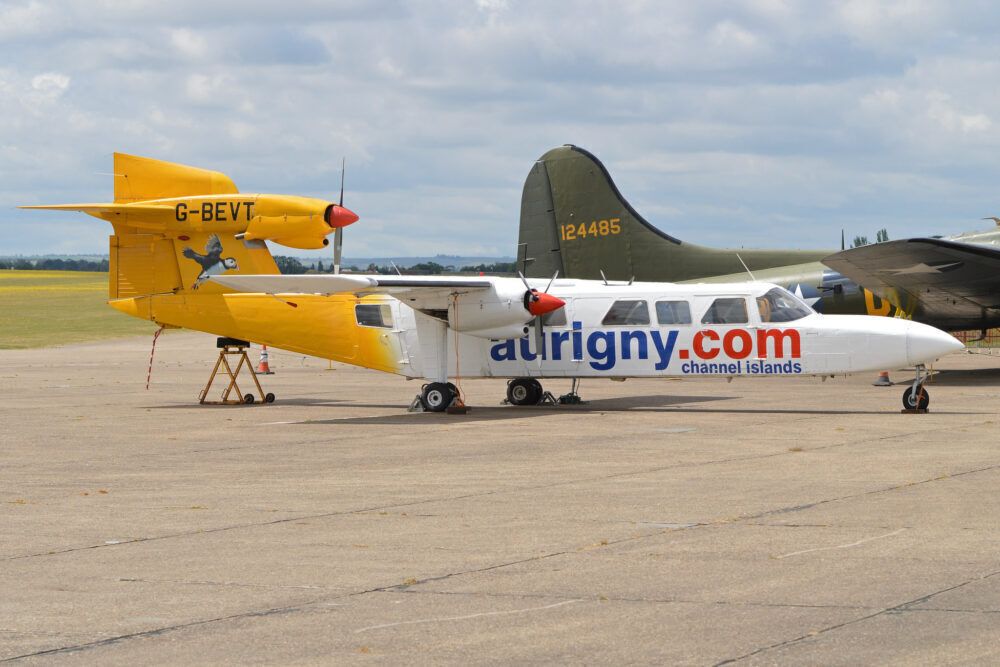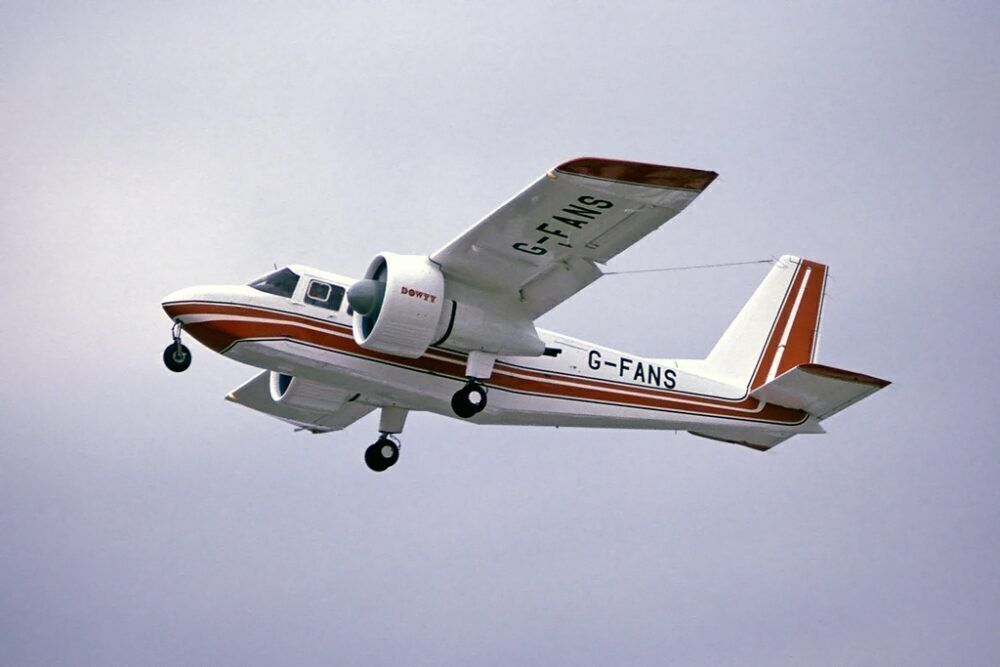Earlier this week, a plucky little British-designed regional airliner celebrated a remarkable anniversary. Specifically, June 13th marked 56 years since the Britten-Norman BN2 'Islander' made its first flight. This in itself may appear to merely be the passing of another year. However, what makes the Islander's story special is that, 56 years later, it remains in production and widespread service to this day. Let's explore its diverse history.
The origins of Britten-Norman
Britten-Norman came into existence in the mid-1950s, when its main focuses were agricultural and light aircraft. It was founded by John Britten and Nigel Desmond Norman, from whom the company takes its double-barrelled name. Their first contract was to modify de Havilland Tiger Moths for crop-spraying in Sudan. They did so on the Isle of Wight.
Interestingly enough, the company's two founders had completed their training at de Havilland. As such, so the Tiger Moth was a good design for them to modify. However, they quickly moved on from the field of modification, electing instead to design their own aircraft. Their first plane was the single-seat BN1 'Finibee,' although only one was produced.
Stay informed: Sign up for our daily and weekly aviation news digests.
The Islander emerges
Despite the BN1 not proving to be a commercial success, Britten-Norman pushed on. Before producing its next design, it elected to conduct a more thorough study of the aviation market to assess its needs. This led them to find sufficient demand for a small, twin-engine utility aircraft that could serve both commuter routes and remote locations.
The commuter sector was of particular interest to Britten-Norman, which observed that this market was growing rapidly at the time. With this growth in mind, it decided that its next aircraft's specifications would target payload rather than speed or range.
The result of the company's extensive research, and the aims that it yielded, was a new design which it dubbed the BN2 'Islander.' This aircraft eventually made its maiden test flight 56 years ago this week, on June 13th, 1965. Two Rolls-Royce/Continental IO-360B piston engines powered the plane, which appeared at the Paris Air Show four days later.
Demand increase forces a change
In its early years, the Islander was a very popular aircraft. This proved that the company's assessment of the contemporary aviation industry's needs was correct. However, this posed a problem for the company. To begin with, it was assembling the aircraft at its Bembridge factory on the Isle of Wight, just off the South Coast of the UK.
British Hovercraft, based elsewhere on the Isle of Wight in East Cowes, also played an important manufacturing role. However, these facilities had their limits, and the company soon found that it couldn't keep up with the demand. As such, Britten-Norman established a partnership with Romania's Intreprinderea de Reparatii Material Aeronautic (IRMA).
The Romanian job
The premise of this arrangement was that IMRA would construct the aircraft as kits. The aircraft would then return to Britten-Norman's UK facilities for completion. The first Romanian-built Islander eventually took to the skies for the first time in August 1969.
The partnership between Britten-Norman and IMRA proved fruitful. Indeed, the production of Romanian-built Islanders eventually reached 30-40 aircraft a year. Since the late-1970s, all Islanders have been built there, with the turning point being a 100-aircraft order in 1977. All in all, IMRA has produced more than 500 of the world's BN2 family aircraft.
Additional variants
The BN2 family was more than just the original twin-engine Islander design. Indeed, 1970 saw a further two variants take to the skies, serving both commercial and military purposes. The first to do so was the military 'Defender,' which made its first flight in May that year. The defender has been used by armed forces and coast guard operators around the world.
Four months later, in September 1970, the second of the two additional variants took its maiden test flight. This version featured a stretched fuselage and a third, tail-mounted engine. This led it to become known, rather aptly in terms of wordplay, as the 'Trislander.' The longer fuselage allowed the Trislander to hold more passengers than the Islander.
Specifically, it could seat up to 18 paying guests, as opposed to the Islander's 10. It was also slightly faster, with a cruising speed of 249 km/h (135 knots), compared to 240 km/h (130 knots) on the Islander. Similarly, its 1,600 km (870 NM) range exceeds that of its twin-engine counterpart (1,398 km / 755 NM). It sold 72 examples between 1970 and 1980.
Commercial success
As we established at the beginning of the article, one of the things that makes the Islander special is the fact that it has remained in production for an incredible 56 years. The cycle could have been rather shorter, as Britten-Norman entered receivership in 1971.
However, it was purchased by Belgium's Fairey Aviation in 1972. This gave the aircraft another production location alongside the UK and Romania, although the final stages still took place on the Isle of Wight. All in all, 1,280 examples of the Islander have been produced, with military and commercial operators ranging from Angola to New Zealand.
An autonomous future?
So what's next for the Islander after all this time? Of course, throughout the plane's 56-year production cycle, the aviation industry has changed significantly. Correspondingly, Britten-Norman has also made several alterations to the Islander's design. These have included a lengthened nose, and increases to its wingspan and fuel capacity.
Going forward, Britten-Norman has intentions to develop its popular Islander to have an autonomous co-pilot. In co-operation with Blue Bear, it hopes to make this a reality for operators of its STOL airliner and utility aircraft a reality by the mid-2020s. It will be interesting to see how this concept, which could save airlines money, will develop.
What do you make of the Britten-Norman Islander still being in production after all this time? Have you ever flown on one of these regional airliners, and with which airline(s)? Let us know your thoughts and experiences in the comments!

